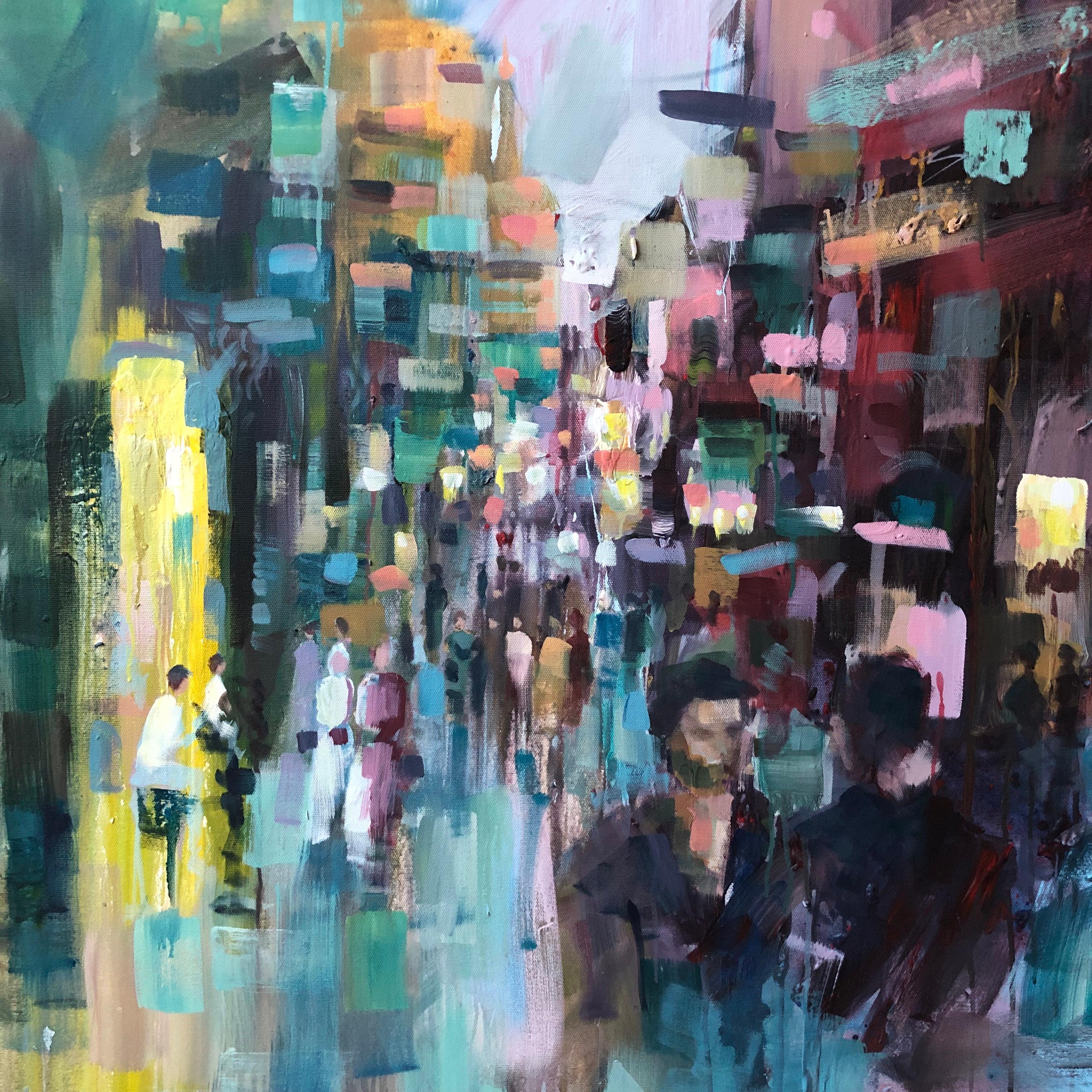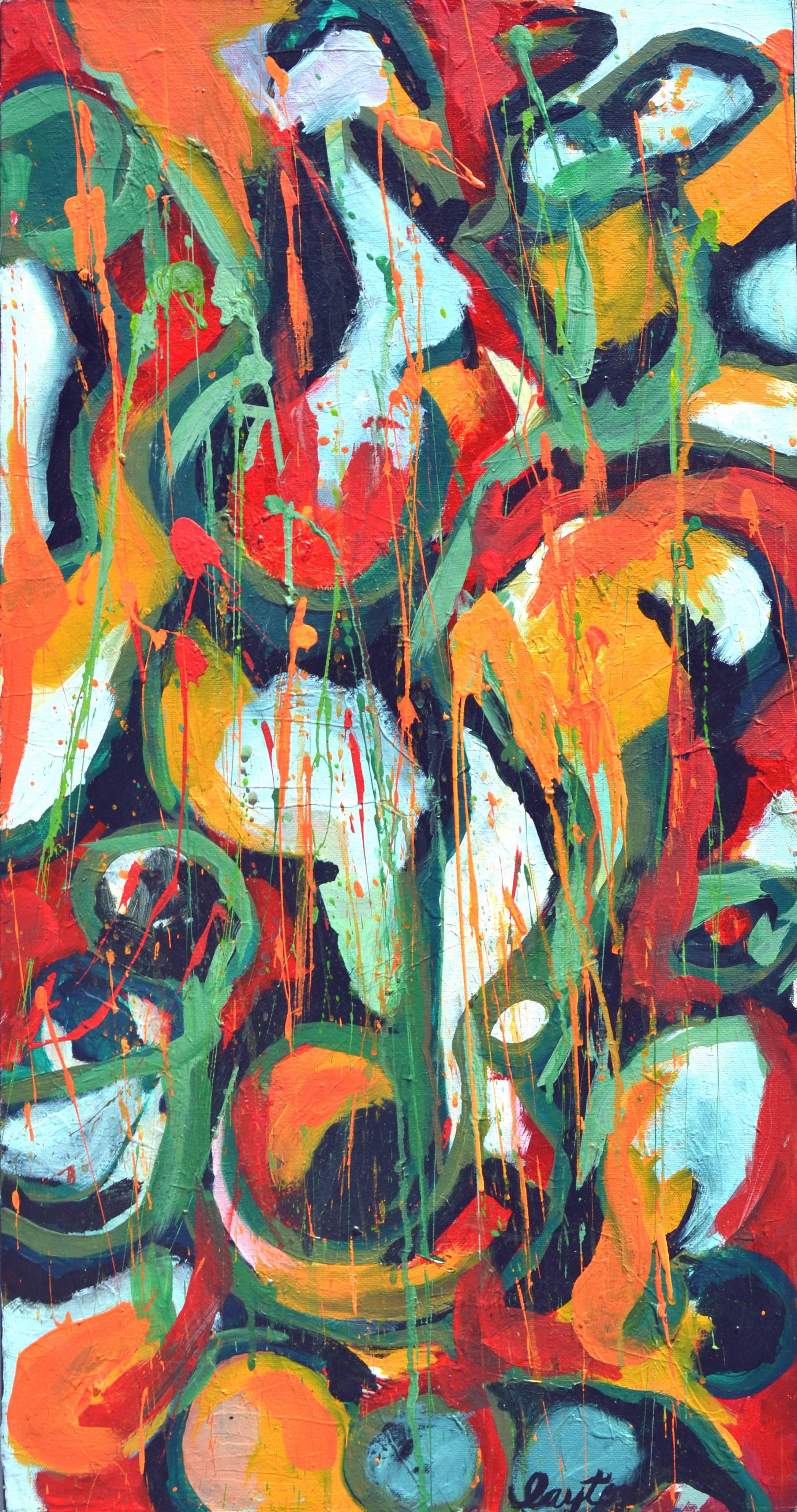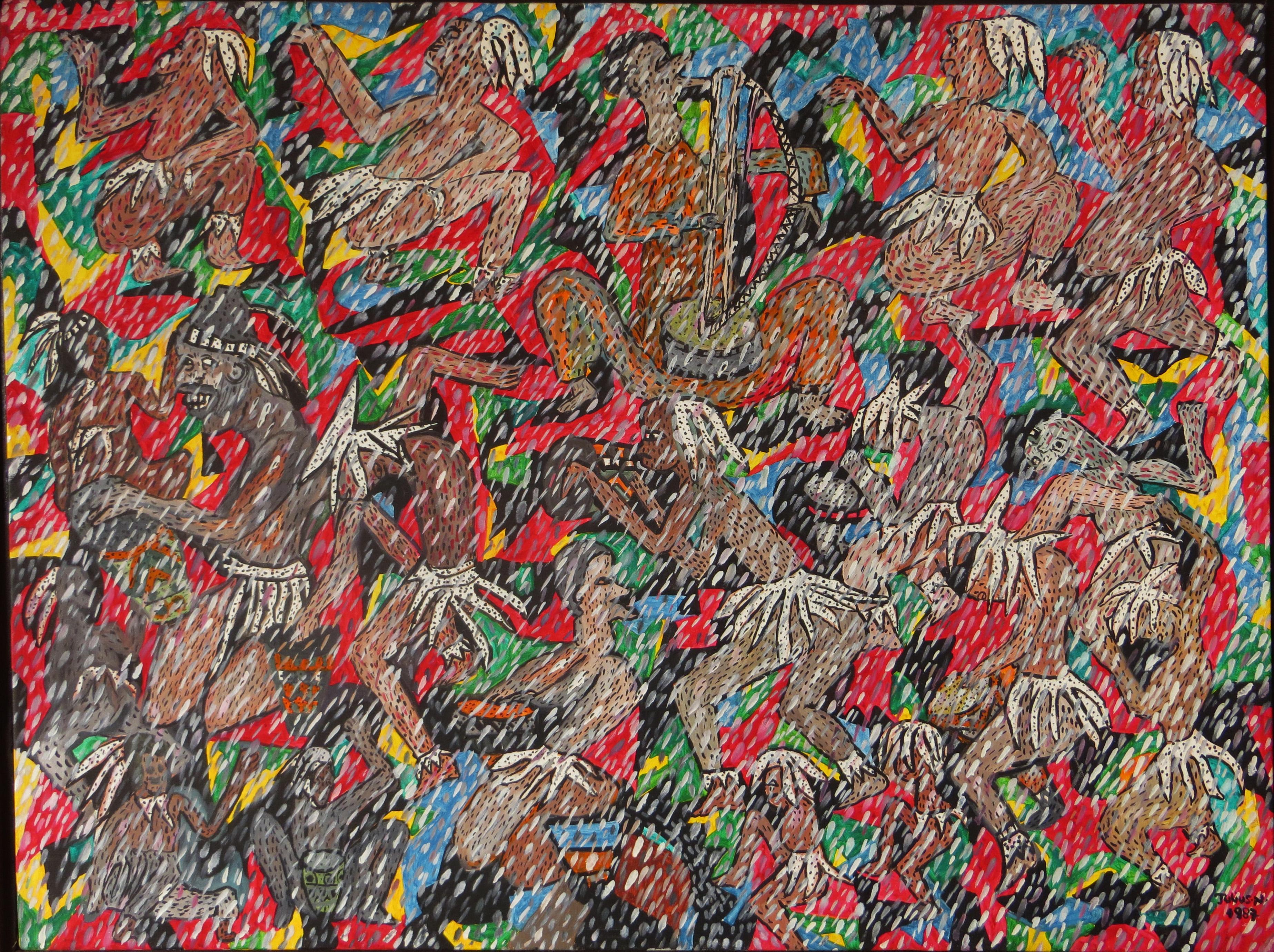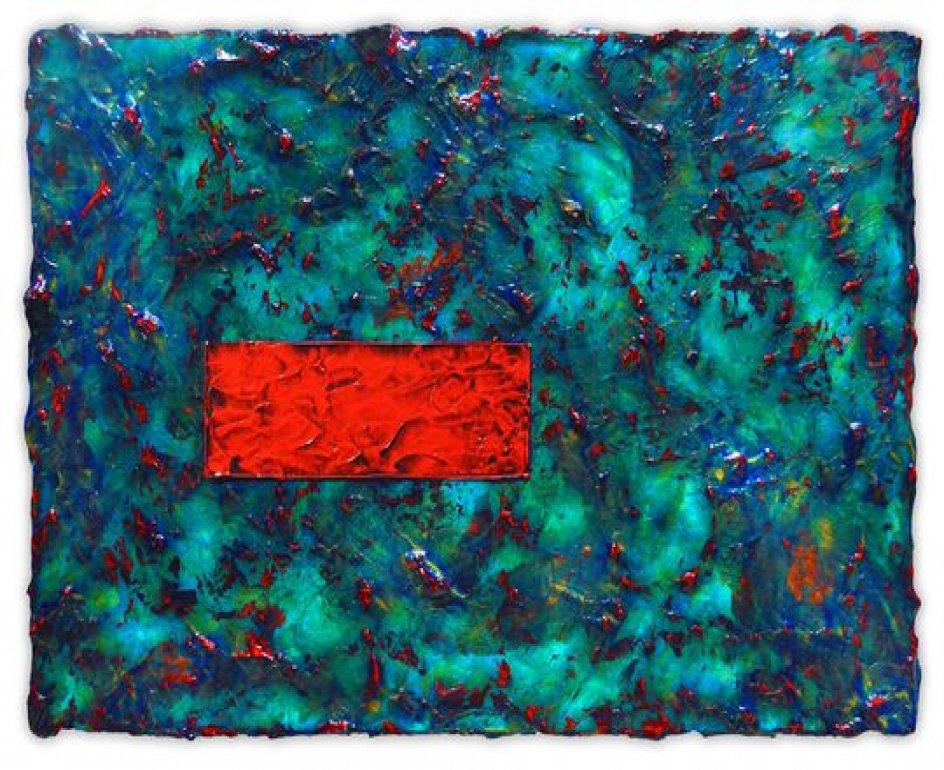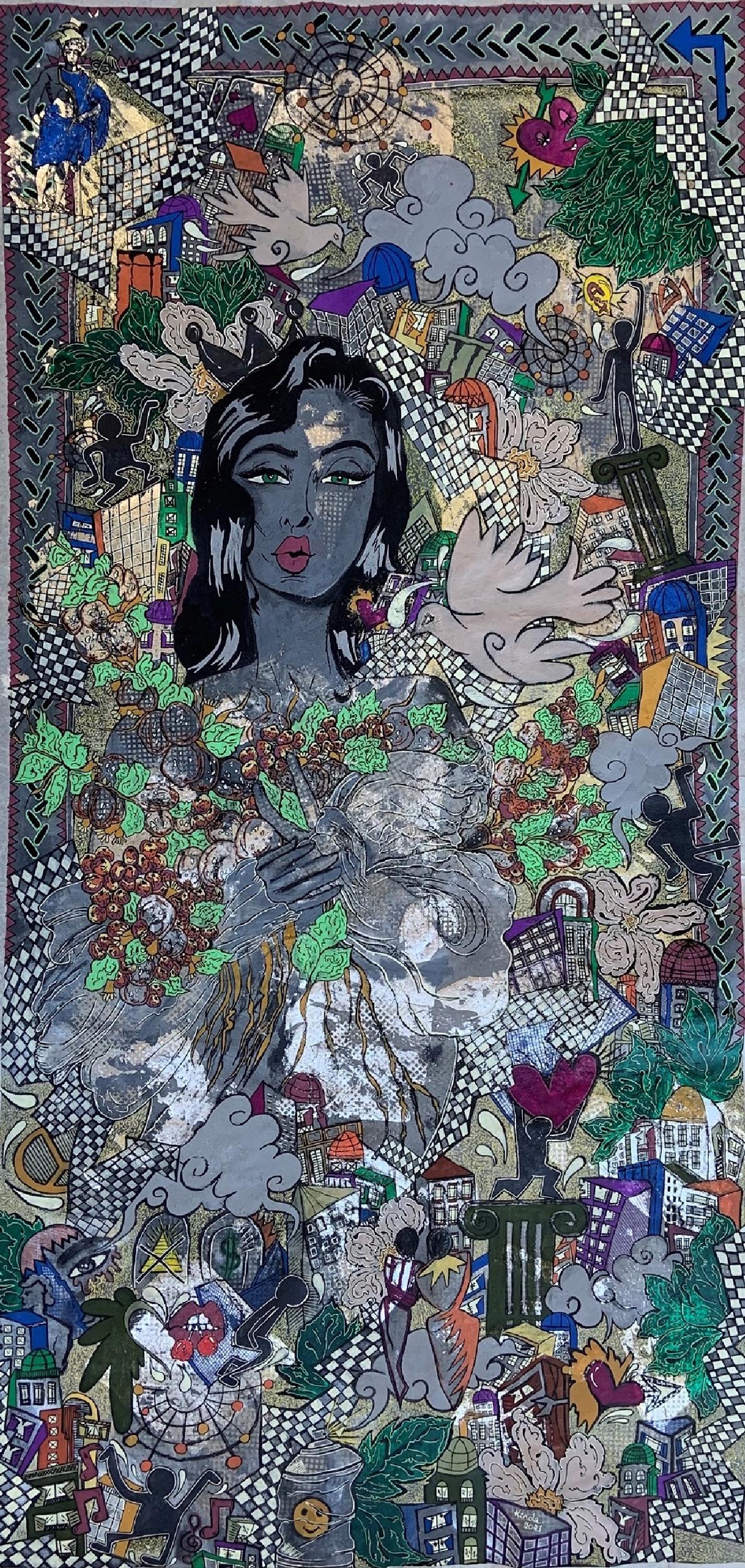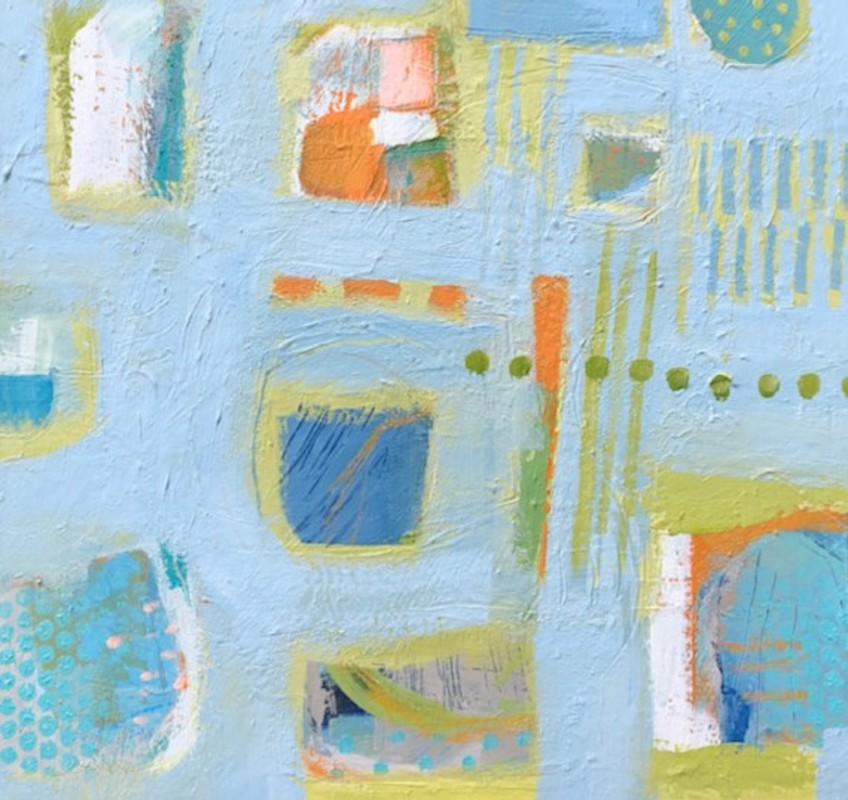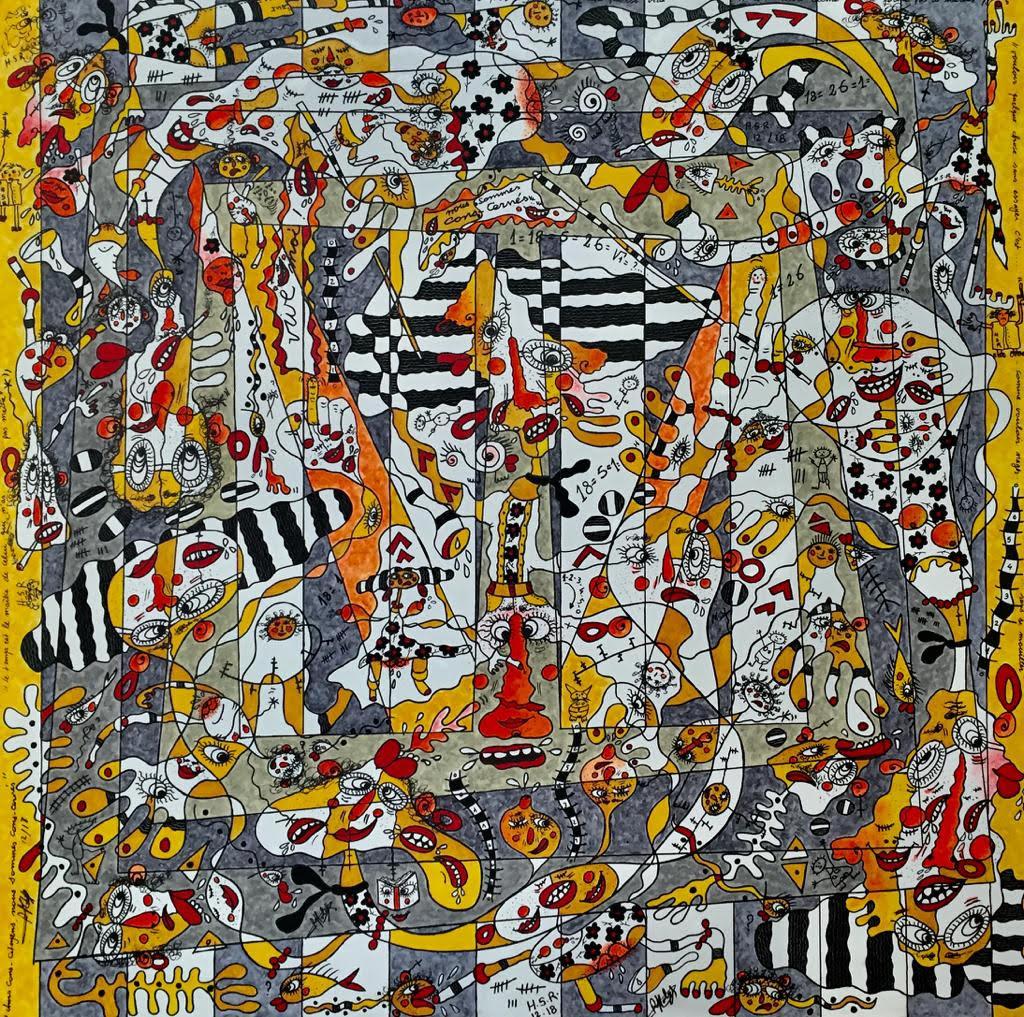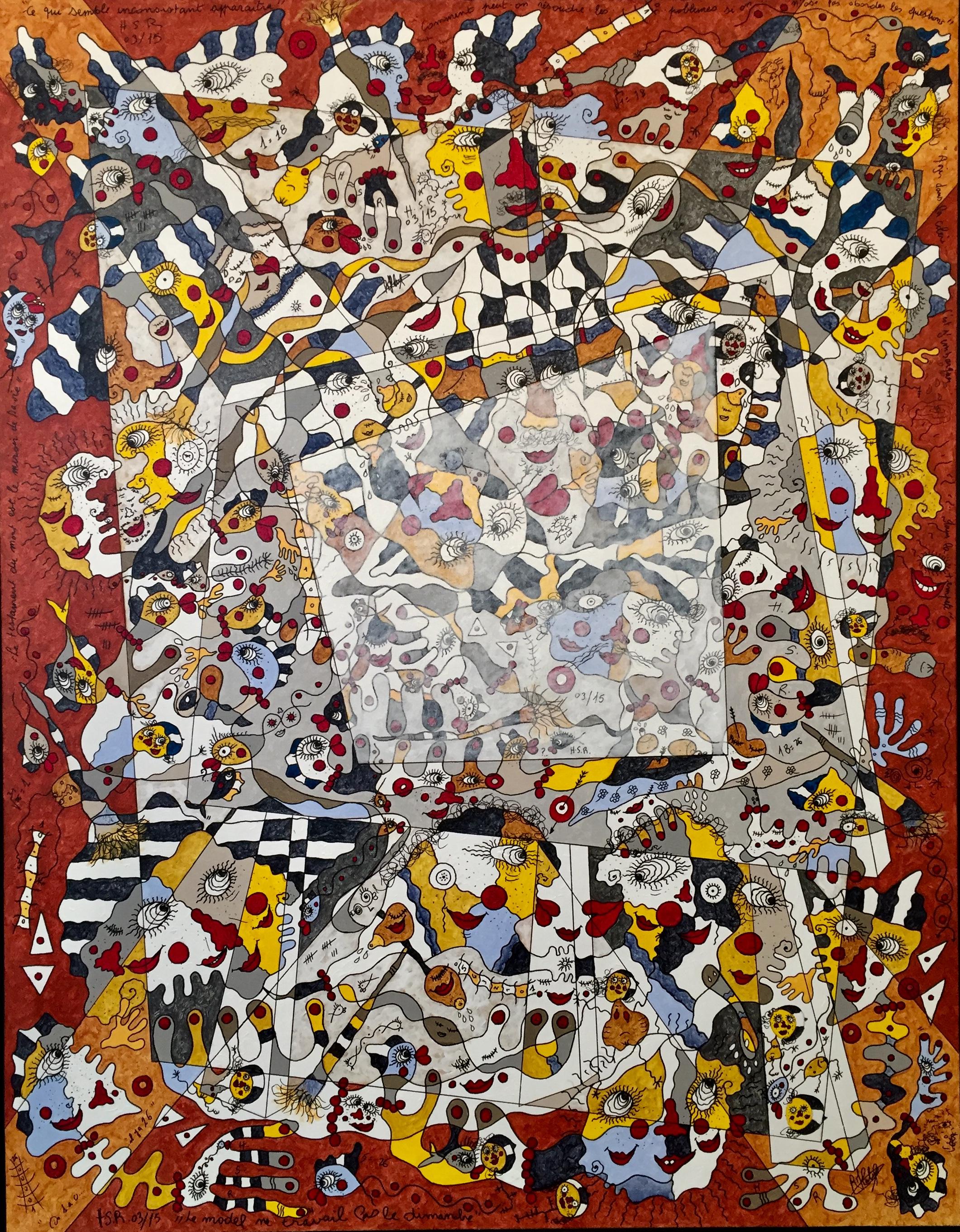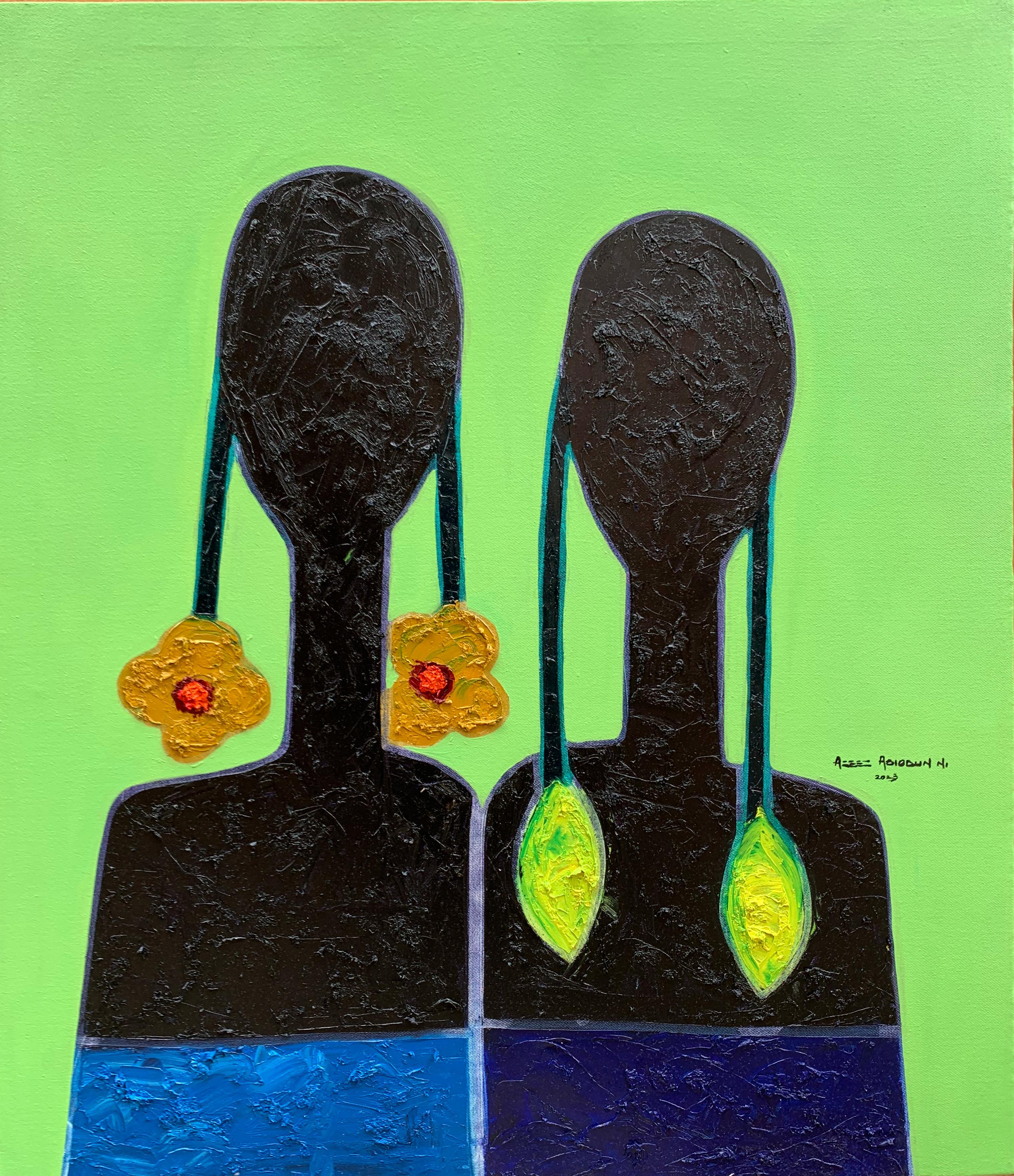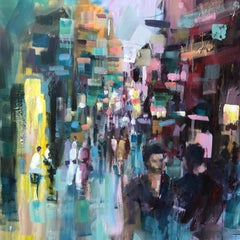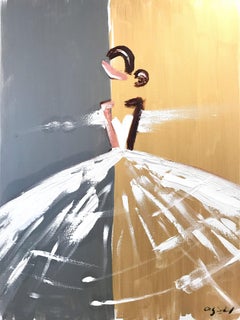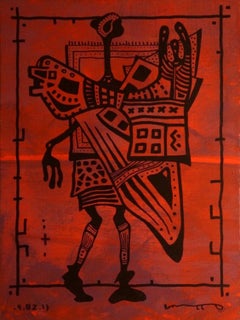
Aditi, Contemporary Abstract Painting Canvas Woman Portrait Graphic Red Black
View Similar Items
1 of 11
Yuriy ZakordonetsAditi, Contemporary Abstract Painting Canvas Woman Portrait Graphic Red Black2013
2013
About the Item
You May Also Like
- "El Moez Street" Abstract Painting 39" x 39" inch by Ahmed DafrawyBy Ahmed DafrawyLocated in Culver City, CA"El Moez Street" Abstract Painting 39" x 39" inch by Ahmed Dafrawy Dafrawy’s fine arts academic background started in 2014 when he received the certificate of drawing course comple...Category
21st Century and Contemporary Abstract Expressionist Abstract Paintings
MaterialsAcrylic, Canvas
- "Gabriella" Abstract Figure with Gown French Haute Couture Oil Painting CanvasBy Cindy ShaoulLocated in New York, NYExploring the purity of the feminine form and the drama of French haute couture, artist Cindy Shaoul creates a dialogue between the figurative and the abstract. Her spirited composit...Category
2010s Abstract Figurative Paintings
MaterialsCanvas, Oil, Acrylic
- "Nacho Libre", Small-Scale Contemporary Abstract with Blue, Gold, & PinkBy Frank Thomas RomeroLocated in Soquel, CASmall-scale vibrant contemporary abstract composition with blue, gold, & pink by Aromas, California, Monterey Bay Area abstract expressionist artist Frank Thomas Romero...Category
Early 2000s Abstract Expressionist Abstract Paintings
MaterialsCanvas, Acrylic, Cardboard
- Early Morning - LaytonLocated in Soquel, CAAbstract Expressionist painting by Layton (American, 20th c.).Circa 2000. Image 30"H x 15"W. Acrylic on canvas wrapped and edges painted black.Category
Early 2000s Abstract Expressionist Abstract Paintings
MaterialsCanvas, Acrylic
$920 Sale Price20% Off - UntitledLocated in San Francisco, CAArtist: Julius Njau – Tanzanian (1961- ) Title: Untitled Year: 1987 Medium: Acrylic on Canvas Sight size: 27.5 x 36.5 inches. Framed size: 29 x 38 inches Signature: Signed, dated lower right Condition: Very good Frame: Framed in original frame. Frame in fair condition This colorful painting of figures is by the well-known Tanzanian artist Julius Njau. It is in very good condition and signed “Julius N” and dated 1987 in the lower right. The frame is simple unfinished wood. It has a few small scratches Tanzanian artist Julius Njau was born in 1961 Marangu, Moshi in Tanzania. He attended the Primary School Kilimanja. In 1972, a serious fracture of the leg caused him to spend two years in hospital where he began to paint and his career as an artist commenced. Julius was encouraged by a Finnish radiology specialist who supplied him with material and purchased his works. She also organized his first exhibition in Finland in 1983. The first works of Njau are very representative, inspired by the nature and the traditional aspects of his country. In 1984 his technique changed and his style transformed. Julius Njau paintings are characterised by the interaction of primary colors and the mixture of forms. Julius Njau's artworks works are part of the collection of Osaka Prefecture and Toyama Museum of Modern Art in Japan. They are also in the Frankfurt Museum of Ethnology (fur Volkerkunde), in the ZAK Gallery (Zeitgenossische afrikanische Kunst), Furth in Germany, in the Amos Anderson Helsinki Gallery, Finland, and in the 5th British Museum in England. In 2002, Julius Njau received a Nagoya City Hall Award and in 2003 the Grand Prize at the Toyama Prefecture International Competition at the "Sukiyaki Encounter the World" Poster Design Festival. Julius Njau is President and a founding member of the Marafiki group. EXHIBITIONS 1983 'Julius Njau One Man Show' Amos Anderson Museum, Helsinki, Finland 1984 'Group Exhibition' Gallery of Denmark 1985 'Julius Njau One Man Show' Danish Volunteer Training Centre, Tanzania 1985 'Julius Njau One Man Show' Tynset, Norway 1985 'Julius Njau One Man Show' Gallery of Sweden 1986 'Julius Njau One Man Show' Danish Volunteer Training Centre, Tanzania 1987 'Julius Njau One Man Show' Gallery Watatu, Nairobi, Kenya 1988 'Julius Njau One Man Show' Vogue Gallery, Nairobi, Kenya 1988 'Julius Njau One Man Show' Centre culturel francais, Nairobi, Kenya 1989 'Julius Njau One Man Show' National Museum of Kenya, Nairobi, Kenya 1990 'Into the Nineties' Gallery Watatu, Nairobi, Kenya 1990 'Portraits of Kenya' Gallery Watatu, Nairobi, Kenya 1991 'Gallery Artists' Gallery Watatu, Nairobi, Kenya 1991 'The Custodian's View' Gallery Watatu, Nairobi, Kenya 1991 'Julius Njau One Man Show' Nairobi Safari Club, Kenya 1991 'Julius Njau One Man Show' Nagoya City Network Centre, Nagoya, Japan 1991 'Julius Njau One Man Show' National Museum of Kenya, Nairobi, Kenya 1991 'Julius Njau One Man Show' The German Culture Centers, Goethe Institut, Nairobi, Kenya 1992 'Julius Njau One Man Show' International Gallery, Madrid, Spain 1992 'Through the Artists' Eyes' Gallery Watatu, Nairobi, Kenya 1992 'Rafiki wa zamani' Gallery Watatu, Nairobi, Kenya 1992 'Kenya Art...Category
1980s Abstract Abstract Paintings
MaterialsCanvas, Acrylic
- The Red Element on Green-1.0Located in Miami, FLAcrylic on canvas. Unique, 1 of 1 piece. Cerj Lalonde moves smoothly from the canvas to the camera, from computers to installations, producing and showcasing an extraordinarily rich and complex body of work created during the last 30 years. His purpose is to pursue a direct, and, in each case, a different communication with the spectator. It can be said that Lalonde works as a team with himself, not only to develop his artwork, but also to sharpen his personal ideas about contemporary culture, trends... Lalonde is putting a lot of time, energy and thought into his new media and technology productive structure, where he can directly address his issues... His paintings, installations, photographs and web pages, are intended to function each in its own way, as an overt revision and critique of the contemporary art system, as they establish parallel dialogues between the artist, the public, and the curatorial values. "Lalonde, the painter" Cerj Lalonde works his painting with a conceptual approach, as an attempt to restate the validity of painting as a practice per-se. His abstract language ranges from lyric abstractionist pieces to many personal interpretations on art history masterpieces, as specific reflections upon geometric abstract paintings like Malevich´s black square series, or Albers study of color, among others. Lalonde holds many layers as an artist. His years of experience as a painter and thirst for art history and critique have helped him develop into a consciously literate artist. Formally, his domain of techniques ranges from drawing, printing, and primarily acrylic painting by means of a wild contrasting palette. But more than any type of formalism, Lalonde´s work is a strong statement about painting itself and how he approaches abstraction from a conceptual viewpoint. His paintings celebrate the power and meaning of color and texture, the imperative voice of contrast and stridence, and the million of possible solutions for a white canvas. I also see in his artwork a psychoanalytical interpretation of art, and a curiously unintentional approach to oriental philosophy appears throughout his multi sized body of work. In many of his canvas, the presence of the square has been integrated as an element of equilibrium and unity to the soul of the artwork itself. Lalonde is specifically interested in the qualities of painting as a media: “What Painting and only Painting can do”. Of all arts, painting is perhaps the most intimate and personal of art languages. It reaches the viewer at a last phase, in the gallery, or museum, or exhibition space. In the meanwhile, there is a time frame between the moment when the artist finishes his work and it gets shown. This space of time is silence. It can be said that the gap between the act of painting and its way out of the studio has had Lalonde wondering about other strategies of approaching the viewer, the critic, and to challenge the art world as a system. New media's and technology In his body of work related to the Internet, the use of language can be established as the first notable addition where the silent scream that comes from his paintings invades the screen and transforms it into words. We can feel the imperative urge to communicate. Lalonde addresses everyone and no one, and a certain/uncertain dialogue is established between him and the anonymous viewer/Web surfer/browser who reads it. Lalonde has produced multiple web sites. With this media, he has taken over a physical/nonphysical space to express his ideas about the act of seeing, of looking, and getting intoxicated by the gaze, by the sight, by the cognitive look, and the subjective one. Another interesting aspect is the inclusion of his images as an artist in several ways. For example, in SELF PORTRAIT AS A FAMOUS ARTIST he presents himself in all the archetypical attire of the romanticized representation of the artist. Lalonde has reverted all his irony and sarcasm as images that appear as brushstrokes on his Web sites. Another image that frequently appears is the sweet face of a very young woman, who looks at the browser with sweetness and nostalgia. As websites are build through layers, Lalonde has as well, constructed layers of impact, thought, and reflection, by means of the multiplicity of images that appear, ranging from his own paintings, installations, portraits, and text. He is interested in what defines art, who validates artwork, how artist’s success has a strong pull to media and critic dependency. Lalonde points out these issues as loud as a silent scream. Phrases such as the Dominance of Curatorial Ideology, Global Mono Cultural Art Discourse or Hegemony of the Global Curatorial Class are samples of titles that frame parts of his Web visual discourses. In his installations and performances such as THE NO SHOW, and WORKING TO BECOME RICH AND FAMOUS SO YOU CAN LOVE ME FOREVER, Lalonde discusses the notion of the self and identity, the artist as a social figure, and the severe critique of the contemporary art system, and society at large. He questions the validity and the ideology of the curatorial establishment, the marketing methods, and the issues of the self - as he queries the conventional paradigm of the artist. On his Web pages, Lalonde metamorphoses from an anonymous painter in his studio to a more public personae. His gaze looks at the viewer, his open mouth screams and questions the browser constantly, sometimes as an outsider and sometimes from the hypothetical voice of the viewer’s conscience. In SEEING, a photographic installation that can be considered as a milestone in his work, he presents a dark room that has many different sized eyes that are looking at the viewer. An interesting aspect of Lalonde’s digital work is the presence of a perpetual reflection that not only shows the act of seeing itself, but in a more profound way it presents the subconscious mind of the viewer. He inverts his role of an artist and establishes a dialogue with the unconscious of the spectator, both through his installations and digital art work...Category
2010s Abstract Abstract Paintings
MaterialsCanvas, Acrylic
Price Upon Request
